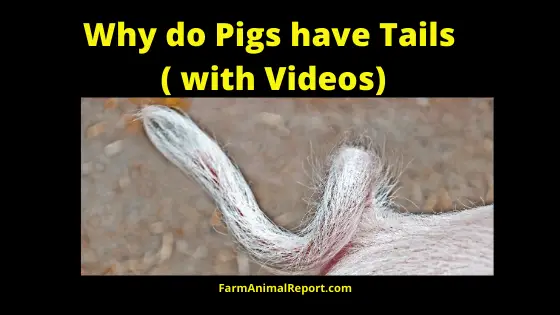Why Do Pigs Have Tails?
Why Do Pigs Have Tails – If you are interested in commercial pig farming, you may have wondered What are Pigs Tails used for, or you are thinking about pig farming and you want to know about the selection of animals, feeding guidelines, and their management. Our Articles Reference an Article w/ Videos, the Majority written by Veterinarians.
The Pig tail is full of neuro-anatomical structures responsible for the pain response. It is comparable to our human skin.” Unlike in many other animals, the pig’s tail may not have a wide range of functions. At best it serves to chase insects away and when in a curl, it gives an
indication of the animal’s health. Still, when something happens to that tail, whether this is being docked or bitten, this body part responds like any other.
Pigs have been domesticated for over 7000 years and until the 1960’s farmers often only had a few pigs. These pigs were kept in pens with straw and outdoor area. At that time tail biting already occurred, but it was not a major problem.
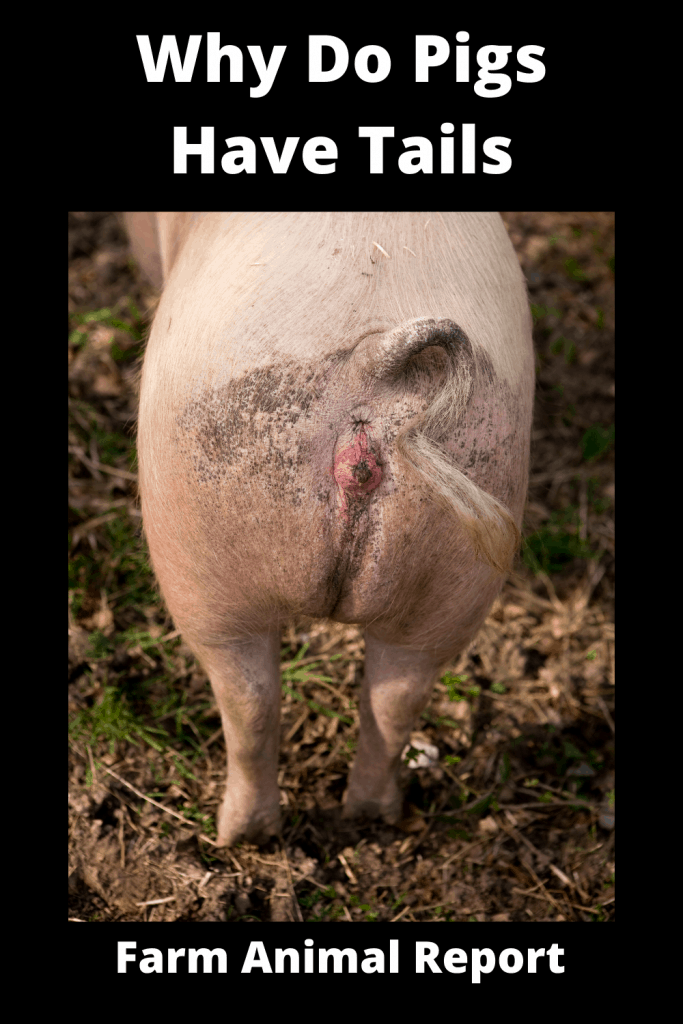
Tail biting is an adverse behavior performed by pigs who are likely to be bored or frustrated and have been found mainly among weaned piglets and finishing pigs. Also biting behavior directed at pen mates’ ears, legs, and flanks is considered an adverse behavior like tail biting.
See Our Extensive Guide – 13 Ways to Make Money Pig Farming
During the 1960s pig production was intensified and new husbandry techniques became available. Specifically, liquid manure-handling systems using slatted floors were introduced and quickly adopted, especially on farms with finishing pigs.
Bedding materials like straw caused blockages of these manure-handling systems and subsequently, the use of bedding materials ceased. It has been suggested that at the same time the tail-biting incidence increased.
Expressing Emotions by Using their Tails
In primitive vertebrates and fish, the function of the tail was mostly for locomotion, with the development of legs this function is less clear but still important. In many species, the tail is still used for activities that are related to locomotion, but the tail can also be used for protection, anti-predator behavior, and (intraspecific) communication.
In ungulates, an erected tail is associated with alarm and flight behavior, or to display their rump patches during social interactions suggested that tail erection on his own occurs as a result of motor reflexes during arousal.
While tail wagging, side-to-side tail movements, is used for intraspecific communication in deer and dogs. Tail wagging in ungulates is simply indicating arousal and does not have other functions. Tail wagging has been described as a sign of ‘restlessness’ in cattle and ‘frustration’ in antelope.
Pigs can have their tail in a curl. This is probably due to domestication. Not much is known of the function of the pig’s tail. The tail posture could be linked to behavioral activity levels.
Active pigs have their tail usually in an upwards curl, while resting pigs usually keep their tail relaxed or ‘switched off’. Pigs have their tail in a curled posture approximately 75% of the time and in a hanging posture 25% of the time.
Emotions in Behavioral
Fear and anxiety are two emotional states induced by the perception of a danger or a potential danger that threatens the integrity of the animal. Pigtail postures and motion may be associated with emotional states in pigs. A curled tail can be linked to a positive emotional state or a positive valence. However, during fearful events, active pigs can also show a curled tail, indicating a link with high arousal.
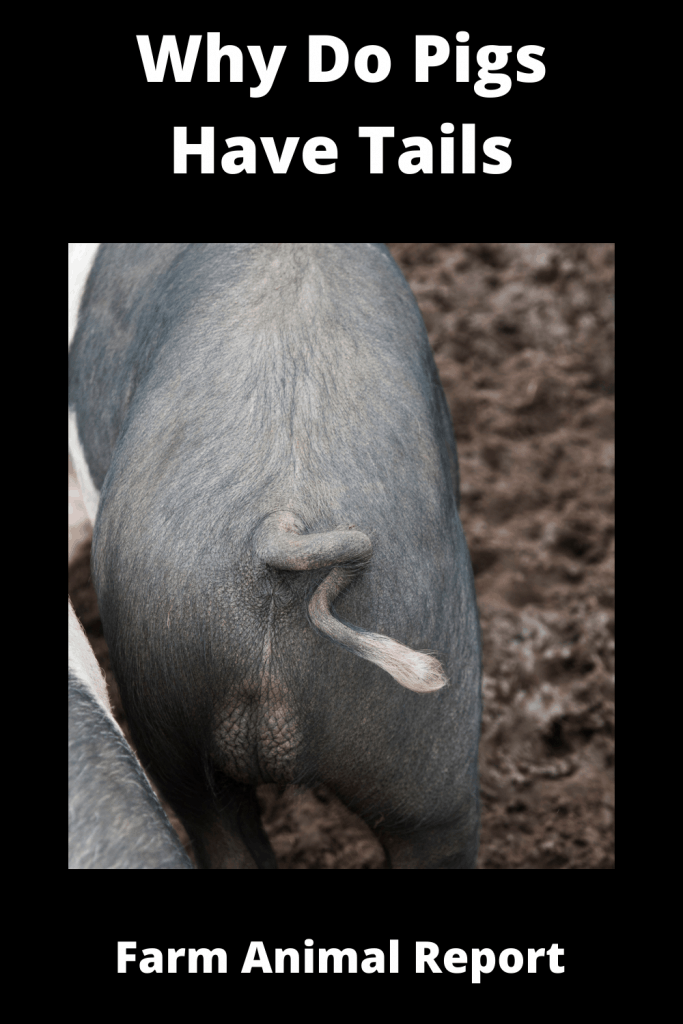
A tail between the legs can be associated with a negative emotional state, or negative valence and low to medium arousal. A wagging tail can be associated with a negative emotional state (negative valence) like frustration or restlessness with high arousal.
It can also be suggested that the tail has a function for intraspecific communication, but this is still unclear. A hanging tail can be linked to a more neutral state, neither positive nor negative nor seen as a “switched off” tail.
Tail Biting
The term ‘tail-biting’ has been used to describe several behaviors in pigs, ranging from gentle oral manipulation of the tail to biting that inflicts skin wounds and amputation of portions of the tail or even the rump. Most scientists refer to tail biting as the behavior of biting in the tails of pen mates that results in tail lesions.
Two stages are often distinguished in the development of tail biting Stage 1, is tail biting behavior in the pre-injury stage, before any tail damage is present. In some cases, this is followed by stage 2, the injury stage or ‘tail-biting outbreak’, where at least one tail in a pen is damaged and bleeding.
In the injury stage, the severity of tail damage can range from small bite marks (size of pinheads) to amputated tails with a severe tail wound and from one to all pigs in the pen. In this thesis a clear distinction is made between tail biting behavior and the clinical consequences; tail damage.
A ‘biter’ is the pig who performs tail biting behavior and a bitten pig or ‘victim’ the pig who receives this tail biting behavior. Tail damage is referred to when a pig’s tail shows clinical signs varying from bite marks to a tail wound. In case of a tail wound, a (large) part of the tail might be bitten off. A tail biting outbreak was defined as the first day with a minimum of at least one pig with a tail wound or two pigs with bite marks.
How Does Tail Biting Behavior Start?
For an etiology of tail biting behavior in a group of pigs, most scientists suggest that this behavior evolves from the motivation to explore. When there is lack of proper environmental enrichment, the chance increases that this exploration behavior becomes redirected (and misdirected) to pen mates’ tails.
When pigs explore their surroundings, they may do so with a distinct purpose of e.g. finding feed or an attractive place to lie down, or they may explore to gather general information on their surroundings. Foraging behavior (as part of the exploration behavior) has an immediate goal and is motivated by a need of consuming feed.
Although intensively housed pigs are fed unrestricted, it does not eliminate the motivation to perform foraging behavior. This probably represents the baseline level of foraging behavior and e.g. hunger increases the intensity of this behavior. Another part of exploration behavior is not controlled by an acute need but has an internal motivation (often referred to as curiosity).
Curiosity motivates the pig to search for novelty or changes in the environment and serves to keep the pig informed about the environment and the resources available in it. Therefore, all pigs have a strong motivation to explore their surroundings.
When the pig’s surrounding provides materials that are suitable for exploration (enrichment) the pigs will mainly direct their exploration behavior at this enrichment and to lesser extend at their pen mates.
Environmental enrichment like plenty of straw is known to increase the exploration behavior (specifically rooting and chewing behavior) directed to this straw and reduce pennate manipulation.
Therefore, providing pigs with a large amount of straw can reduce the chance of tail biting and subsequent tail damage. In contrast, enrichment materials like a rubber toy fail to prevent the occurrence of tail damage.
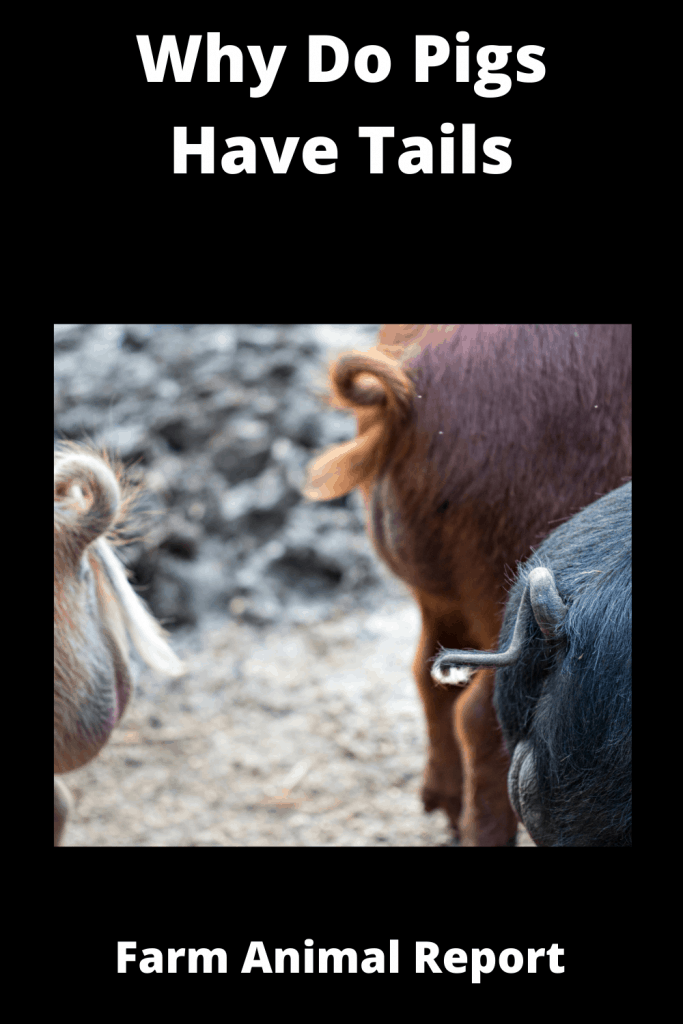
Apart from tail biting evolving from redirected exploration behavior, several other suggestions have been made for tail biting evolving from other redirected behaviors.
These suggestions include redirected suckling behavior following early weaning, redirected social behavior and redirected sexual behavior
What Causes a Tail-biting Outbreak?
Although never quantified, it has been suggested that after the first wounded pigtail is present in a pen, often more victims with tail damage follow rapidly and a tail-biting outbreak occurs. Several aspects have been mentioned to be responsible for this rapid increase.
The blood on the tail is suggested to stimulate tail biting behavior, as pigs showed a higher attraction to a rope impregnated with blood Furthermore, victims with tail damage move around more than their pen mates, probably because of the discomfort caused by the damaged tail.
This increased activity may disturb pen mates and encourage further tail biting. Equally, the irritation of the victim’s damaged tail may cause an increase of tail movement what attracts biters. Tail posture may also be relevant, showed that the presence of an exposed ‘tail’ (rope) end attracted more biting behavior compared with a loop without an end.
Risk Factors
A whole range of factors has been associated with the occurrence of tail biting behavior. These risk factors can be divided into internal (i.e. pig-related characteristics) and external factors (related to the physical- and social environment).
Internal Risk Factors
Genetics (e.g. certain breeds), gender, and the pig’s health status are probably the most important internal risk factors. Genetic factors appear to have a considerable influence on tail biting, although the effects are not clear and their mechanism is unknown.
Floppy-eared pigs, such as Landrace, have been suggested to be the more often biters. However, the variation within breeds is large. Gender differences have been found in many studies and male pigs (non-castrated or castrated) are more at risk of obtaining tail damage compared with female pigs. While male pigs are more often victims, so far, no clear evidence exists that females are more often the biters.
It has been suggested that pigs in poor health are more often biters. Alternatively, it was suggested that ill pigs may be reluctant or unable to avoid tail biting behavior from pen mates and become a victim.
External Risk Factors
Physical surroundings (enrichment, floor, feeding, climate) and social environment (stocking density, mixing after weaning and group composition) are important external risk factors that can lead to tail biting in pigs
A barren environment is undoubtedly the most important external risk factor related to the occurrence of tail biting.
The absence of suitable environmental enrichment like straw, peat or garden mound increases the risk of tail biting. On fully slatted floors approximately twice as much tail biting has been reported compared with half-slatted floors. This could be caused by an unclear distinction of function areas (i.e. space for resting, feeding, exploring and excretion) in a pen with a fully slatted floor.
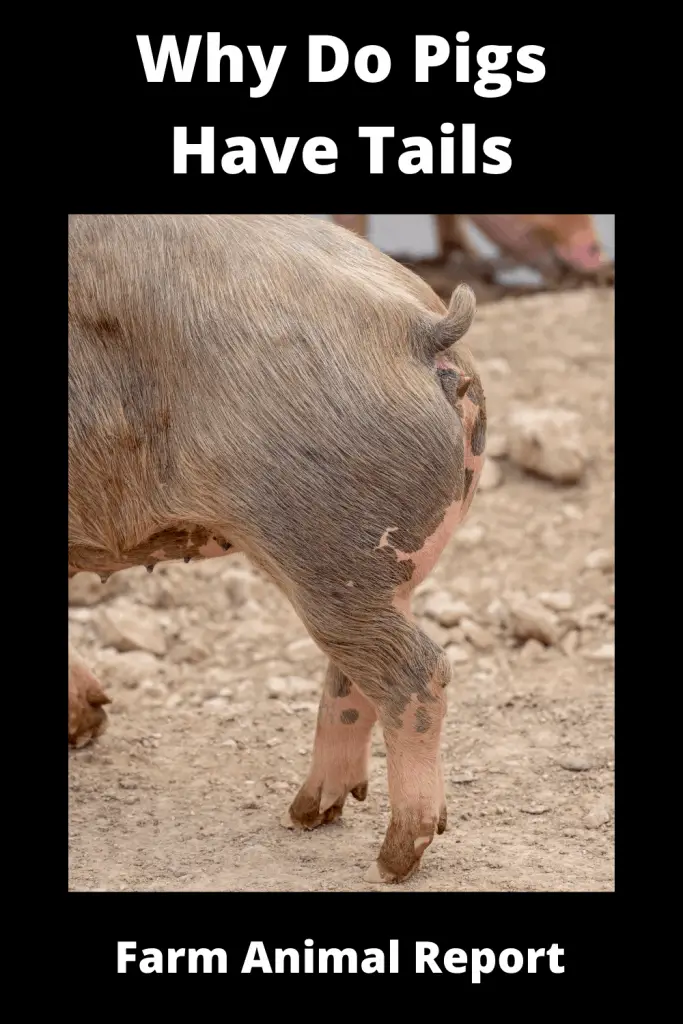
A shortage of feeding space has been found to induce tail biting. Since feeding is a socially facilitated behavior (pigs tend to synchronize their feeding behavior), limited feeding space can lead to competition and subsequent tail biting.
Feed quality and diet composition, such as deficiencies (e.g. mineral, protein) and low fiber have been found to result in more tail biting. Also, the feed form could have an effect on the occurrence of tail biting, although several contradicting results have been found between e.g. liquid and pellet feeding. Furthermore, sudden diet changes have also been linked to tail biting.
World Pig Breeder Associations
| Pig Association | Location | Link |
|---|---|---|
| National Swine Registry | United States | NSR |
| American Berkshire | Illinois | AB |
| Livestock Conservancy | North Carolina | LC |
| American Mini Pig Association | United States | AMPA |
| Southern California Association of Pot Bellied Pigs | California | SCAPBP |
| British Pig Association | UK | BPA |
| National Pig Association | UK | NPA |
| Canadian Swine Breeders Associations | Canada | CSBA |
| Australian Pig Breeders Associations | Australia | APBA |


